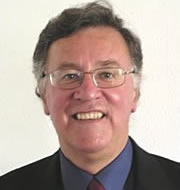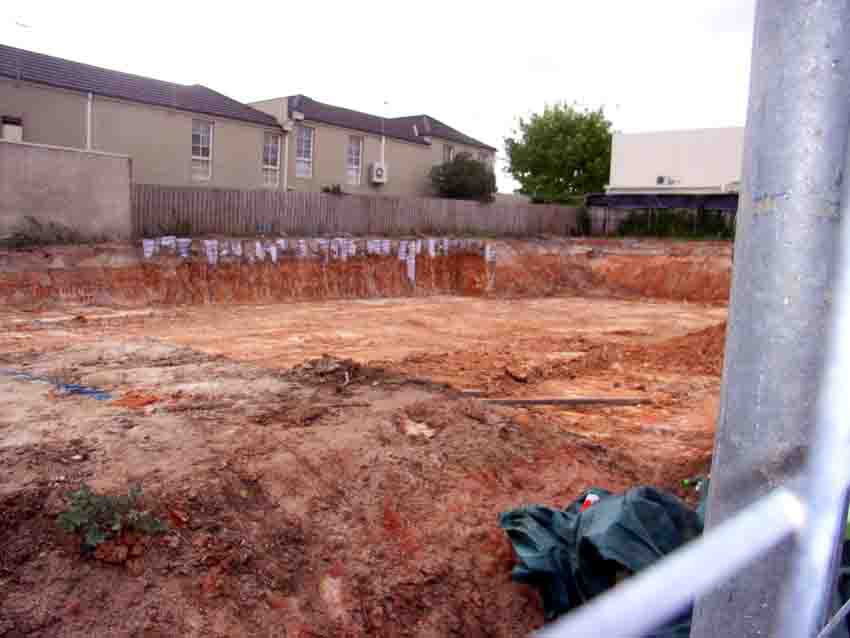On 22 April 2007 Queensland Premier Anna Bligh, then Deputy Premier, rejected calls for ending Queensland's population growth, claiming that it "would have a very serious impact on the construction industry that a lot people rely on for jobs."1.
A year later, on 25 April 2008 as reported2 in the Sunshine coast daily, town planning lawyer, Andrew Davis, similarly objected to the plans of newly elected Sunshine Coast Mayor, Bob Abbot, to cap the coast's population growth at 400,000 from the current population of 300,0003. Davis claimed that Abbot's initial plan to reduce annual population growth from 3.5% to 2% would result in the loss of 8,500 of the region's 20,000 construction jobs. He also claimed that there would be further job losses in the transport, property and business service sector, with flow-ons to other sectors of the economy like retail, tourism, manufacturing.
Indeed, in a manner uncharacteristic for property developers' advocates, even Andrew Davis implicitly acknowledged that such a transition would be necessary when he said, “Turning off the tap of growth, without first achieving success in creating sustainable business, will cause enormous pain for everyone, whether you work in growth industries or not.”
Given that the region does not have adequate water resources, transport infrastructure, electricity generation, or health and education services to meet the needs of the existing population, many argue that it is urgently necessary to end growth now rather than to increase the number of people who will become dependent, for their employment, upon further growth. At the very least, a plan to end the region's dependence upon growth must be adopted without further delay. Sunshine Coast residents should not hold their breath waiting for Davis and the Sunshine Coast developers to devise a plan for a sustainable economy for the region.
Putting back the date for the necessary transition from a growth-addicted economy to a stable steady state economy will only make the eventual adjustment more traumatic.
At least Bob Abbot's plans for a cap are a step in the right direction. As far as it goes, he can rightly claim a popular mandate for his stance, having won the election for Mayor against pro-developer candidate Joe Natoli, with over 70% of the vote4.
Comments posted to the web-site of the Sunshine coast Daily News, in response to the story, also confirm the overwhelming popular support enjoyed by Abbot. (See Appendix 1 below).
Saturday's Sunshine Coast Daily in the story Coast told to grow up and diversify5 of 26 April reported that Sunshine Coast business leaders supported Abbot and called for the diversification of the economy away from dependence upon tourism, retail and the property industry.
Sunshine Coast Business Council chair Paul Pettigrew said, "Reliance on the mainstays of tourism, retail and property development industries must be reduced. The growth of the knowledge, creative, research and innovation, manufacturing and other such skills-based industries will create a larger total economic base that is better positioned for the region’s social and economic future."
Sunshine Coast Environment Council manager Ian Christesen said the time was right to have a debate about growth5.
“The time is right, the people have spoken at the elections, so let’s get on with rational discussion,” he said.
“The rhetoric the state government has been going on about for some time is ‘we’re managing growth’. Everyone realises that’s not the case, growth is managing us.
“We have to diversify our economy. We can’t rely on the vagaries of construction and development to underpin our economy.
“We need to move on and develop something a bit smarter.”
However, as former State Labor MP, Cate Molloy, warned (see Appendix 2) Sunshine Coast residents may see their expressed wishes to curb the demands of the developers frustrated. State Labor Government's supposedly independent assessment panel, has powers to over-rule planning decisions of the Sunshine Coast Council and other local governments.
Already in 2007, at the behest of the Property Council of Australia (PCA), the State Government forcibly amalgamated a number of local governments, against the wishes of the residents served by these councils6. The Property Council viewed the abolished Noosa and Douglas Shire Councils and many other councils, as impediments to its agenda for unrestrained development.
However, the Property Council and the State Government's plans suffered a setback when anti-development candidates in a number of key local government areas including the Gold Coast, the Sunshine Coast, Cairns, and Redland City overcame the additional difficulties caused by the amalgamations and defeated candidates heavily financed by developers7.
In response to this democratic resistance, the Queensland State Government, encouraged by pro-developer Murdoch Newsmedia, set up the independent assessment panel, of which Molloy warned.
Clearly, if Queensland is to be saved from overdevelopment and overpopulation, then anti-development councils, together with their grass roots supporters, will have to show at least as much determination as the developers and their government stooges.
Footnotes
1. Qld govt rejects population cap in the Age of 22 April 2007.[back]
2. Curbing growth 'would cost jobs' by Jane Gardner in the Sunshine Coast Daily News of 25 April 2008 [back]
3. Sunshine Coast plan to cap population on Radio National's PM of 24 April 2008 [back]
4. See Electoral Commission of Queensland's results for the Sunshine Coast Mayoral elections. [back]
5. Coast told to grow up and diversify by Bill Hoffman in the Sunshine Coast Daily News of 26 April 2008 [back] [back]
6. Cate Molloy : Forced council amalgamations planned by Property Council of Australia of 7 Sep 2007 [back]
7. The Australian laments outcome of Queensland local government elections of 29 March 2008 [back]
Comments were posted in response to Sunshine Coast Daily article Curbing growth 'would cost jobs' of 25 April 2008.
"The coast cannot cope with the current growth. ..."
"Growth on the coast needs stemming. At present there are subdivisions without supporting services. The building quality is less than desired, but maximum price is called for by the developers. All in the name of greed."
"It is ignorant for anybody to suggest that we need "Growth" to sustain a economy, most problems in the world are caused by growth, sure there may be "some" job loss for a while, but this will naturally adjust after a while.
"Nothing is gained without pain.
"It's good to see somebody like Mr Abbot standing up to the development industry."
"There are so many examples across the coast of where we are playing 'catch-up' because growth has not been carefully monitored. I invite any Coast residents to try getting around the Sippy Downs / education precinct between 8am - 9am and again from 3pm - 5pm. I sat in traffic there yesterday for 35 minutes - to move only a couple of hundred metres. We're all waiting for the new Dixon Interchange to open and look forward to a reduction in congestion. I'm sure the residents of Maroochy North Shore are also looking forward to the Maroochy River Bridge project completion.
"What Mayor Abbot is suggesting is reasonable, and shows an interest in the long-term livability of the Coast region. I think his vision proves that we have elected the right man for the job - someone who looks at the big picture and doesn't play into the hands of developers and their dollars."
"We don't have a infrastructure now to cope with the people we have here, Look at the most important stuff like the poor state of hospitals,the lack of public transport, the traffic nightmare."
"I don't see why we have to concentrate so many people into one place changing the entire coast into a rat race, ..."
"Enough is enough.Overdevelopment only puts money into the pockets of large developers who are not domiciled on the coast. They are only here to make fast easy money at the ultimate expense of residents. ...
"We can't afford any further development on the Sunshine Coast that only puts money into the developers pockets and leaves the rest of us to pick up the bill. More strength to Bob Abbot and his plans. And an end to the Natoli 'sleep with the enemy' policy.
"From the story and the comments all I can say is, Good for you BOB!"
"The increase is being driven by the federal government via immigration, due to the failure of various other ridiculous schemes to maintain the human plague i.e 'baby bonus'.
"Since 2003, our immigration rate has doubled. This is short term economics; selling state forest, water supply, and sacrificing entire species for a quick-buck. This is a threat to our future far worse than terrorism."
"Perhaps Mayor Abbott's proposed growth rate will help alleviate the difficulties house buyers are having getting their homes completed due to a shortage of tradespeople. (see Saturday's Daily)."
This comment by Cate Molloy, former Labor state member of Parliament who was expelled from the Labor Party for opposing the Traveston Dam was also posted in response to the abovementioned Sunshine Coast Daily article Curbing growth 'would cost jobs' of 25 April 2008.
The current Minister for Infrastructure and Planning Paul Lucas has stated a five member independent assessment panel would be given the first right of refusal on all Noosa development applications so that means they also have first right of approval, of those applications not just the ones in conflict with the planning scheme.
We now have this Famous Five who are about to duplicate the work not only done in council but also that which is referred to the State government for review- a call in- how can any council operate effectively if the responsibility to plan and approve is removed from their hands.
OK so Noosa is only one part of the cake but this kind of eroding of democracy smacks of arrogance.
Noosa got much of its planning done well with a great deal of community input, that is now being removed not only from the mayor but also all the councillors.
We can address this by pressuring the mayor and those councillors who enjoy close relationships with both federal and state government ministers to reinstate our democratic rights.
There is a specific tactic of turning the heat up on our elected representatives to stand up for us on this important issue and not simply roll over, making a few noises about how they hope the process is thorough enough and the state government doesn't select poorly.
I would like to see those councillors who have used state and federal politicians to advance their campaigns to now actually do something with that endorsement.
Vivien Griffin and Glen Elmes have openly declared they want to work together that's great so now Viv and Glen you have to take these issues to state parliament and report back to us the people what you have both achieved.
Debbie Blumel has represented as a labor candidate at least 4 times with endorsements from Wayne Swan and a tinny full of state pollies so now come on Debbie, you can get down to Brisbane get Wayne Swan to go with you, to see Minister Lucas.
You then can report back to us on what you have achieved to get Minister Lucas to rescind this ridiculous Famous Five duplication and removal of our democracy.
Russell Green has mates in State Government and has even turned up at a State Labor retreat. This level of friendship surely must allow you Russell to put forward our case.
Of course we have other councillors who also have close ties in government but lets start with this small but highly and well connected group to really start using their connections as they have so implied they would do.
 How fast is Australia’s population really growing? How much of this growth is due to immigration? Have trends really changed dramatically? Did we need a baby bonus?
How fast is Australia’s population really growing? How much of this growth is due to immigration? Have trends really changed dramatically? Did we need a baby bonus?









 What organisation has only 24 members of which the first ten comprise the current Prime Minister and nine past and present Australian Prime Ministers or Prime Ministerial contenders? And why would they be so dedicated to an organisation with a focus so antithetical to democracy and Australians? Read on.
What organisation has only 24 members of which the first ten comprise the current Prime Minister and nine past and present Australian Prime Ministers or Prime Ministerial contenders? And why would they be so dedicated to an organisation with a focus so antithetical to democracy and Australians? Read on.


Recent comments